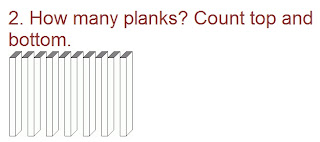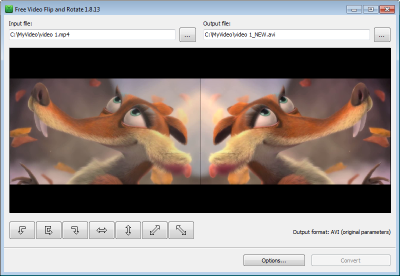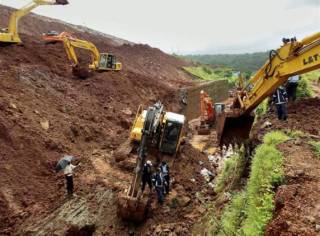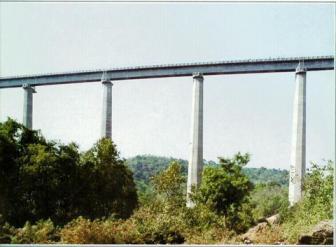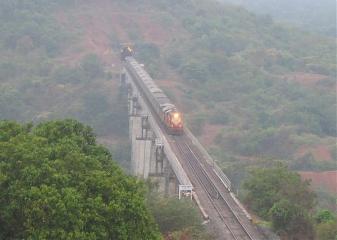Dec 31st 2011
India had just lost the boxing day test match, with a day to spare. Star News was deciding who was the ‘Match Ka Mujrim’. Others were wondering when Sachin will finally score that created in the boardroom, 100th hundred. If an alien visited India around that time and switched on the tele, he/she would have thought our world started and ended with cricket.
Pretty sad, considering an event that slipped completely under our radar.
Dr Elattuvalapil Sreedharan, affectionately called the ‘MetroMan of India’, bid adieu to his 56 year long career of creating 21st century monuments. His exit was a reflection of how he lived; simple, elegant and completely inconspicuous.
Just pause for a moment and think.
56 successive years, in a single job, without a break.
56 Years.
In other words, Dr Sreedharan, worked continuously for a duration, in which an average Indian generally goes from the cradle to his/her grave.
And no one in the media was paying a tribute to this great man. They were not even talking about it. All they had was a silly ticker at the bottom of the screen, that said ‘Dr Sreedharan Retires’. No ten thousand word articles, no special Dr Sreedharan shows, nothing. It was like, it didn’t even happen.
Fundamental question is, Why?
Is it simply because, Dr Sreedharan, is not your quintessential Indian Success Story?
I mean, he is not a IITian, nor is he from an IIM. He is not from a minority community. He did not surmount racial and casteist prejudices imposed by the society. He did not fetch water at 4 in the morning and did not study under street lamps. He did not milk cows to pay for his education. He is neither an actor nor a singer. Neither is he a cricketer nor a cricketer who claims to be an actor.
He was just a simple middle class Indian, who went about his job.
In other words, he does not fall under any bracket that our media terms as ‘an Indian Success Story’.
And according to the media, not an ‘Indian Success Story’ meant ‘No tribute’. And this in a day, when even a guy like Chetan Bhagat will get a glowing biography on his life and times, the day he finally decides to stop writing.
OK, sod the the media. They have TRPs and paying news customers to take care of. But what about the government? They don’t have to answer to anybody. And this guy dedicated his entire life to them. At least they can do something.
But No.
When names were being bandied about for the Bharat Ratna, India’s highest civilian honor, everyone, from politicians to Dhanush, had only one name, ‘I am stuck on 99′ Tendulkar. Infact lobbying for that guy reached such epic proportions, that the government actually changed the award criteria to accommodate that actor.
And Mr Sreedharan, who triple checks all the existing criteria, was not even being mentioned.
The travesty is all the more acute if you consider what Dr Sreedharan has done for our nation.
Like
Date: 22nd of December in 1964,
Location: Rameshwaram town
For most of the non south-Indians, Madras and South India are interchangeable terms. But what you do not know is, South India also happens a favorite holiday spot for various cyclones brewing in the Bay of Bengal. And this South India is not Madras alone, but the entire states of Andhra Pradesh and Tamil Nadu.
This geographical part of India has been hit by so many cyclones that nowadays meteorologists have run out of names.

For most of us, This is THANE
One such cyclone, hit the coastal town of Rameshwaram on 22nd of December, 1964. And it was a deadly one.
Not so long ago, south of Rameshwaram, there used be a bustling town called Dhanushkodi. It had its own post office, customs office and even a Railway Station. My bet is most of you wouldn’t have heard about it. Why?
Because on that fateful night, the Indian Ocean swallowed the entire town. More than 2000 Indians were killed. The ocean even ensured that, a passenger train which was beginning its last journey of the day at 11.15 P.M, made its last journey ever. If you still can’t imagine the ferocity of this cyclone, let me help you

Dhanushkodi, before and after
So where does Dr Sreedharan come in all of this?
As a sideshow, the cyclone destroyed the Pamban Bridge, the only bridge connecting Rameshwaram to mainland India. And this meant Rameshwaram was completely isolated. Considering the above cyclone something had to be done, and fast.
At that time, Dr Sreedharan was a Deputy Engineer in the Southern Railway. And this piece of wreck was in his territory. Indian Railways, gave Dr Sreedharan six months to restore connectivity to Rameshwaram. Which was asking a lot considering
Dr. Sreedharan, had to convert this

To
IN SIX MONTHS
Dr Sreedharan finished the job in ..FORTY SIX 1964 DAYS.
He took one month and 15 days to restore, THAT bridge, back to full operation. The bridge which was India’s longest sea bridge for 96 years, till the Bandra Worli Sea Link was inaugurated in the year 2008.
Forty six days to restore this 2.3 Km bridge in a state where

THIS BRIDGE
took six effin months to restore after being washed away by a flash flood, in 2006.
There are some achievements that look cool, but once you get an award, you completely forget about them. And then there are some you won’t forget, even if you suffer a total memory loss.
This was one of those things.
For all this trouble, Dr Sreedharan got a Railway award consisting of Rs 100 and an awful looking plaque.
The process of short-changing Dr E Sreedharan, began in 1964.
Even If Dr Sreedharan, sat and twiddled his thumbs for the rest of his life, he would have been considered a superhero for his bridge-building awesomeness alone. Fortunately for India though, he did not like twiddling thumbs.
Packing his bags for his next assignment, he set off to Calcutta, where he became the chief designer of the Calcutta Metro. And then, getting bored of railways in general, he took charge of India’s largest Ship building company, Cochin Shipyard.
There he designed, built and commissioned India’s first indigenously built Merchant vessel, the Rani Padmini, in 1981.
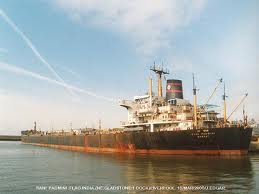
Back then, it was state of the art
After building everything from trains to ships, Dr Sreedharan according to government rules, had to retire in 1990 when he completed 60 years of age.
But, when you are Dr Sreedharan, you don’t have the plebian privilege of retirement.
He was asked to go to Mumbai, to take charge of what was then deemed to be India’s toughest project since independence. It involved burrowing through basalt mountains, spanning kilometer long marshes and rivers and taking railways to a place where even the Britishers thought it was impossible.
This region was the Western Ghats of Maharashtra, affectionately called, the Konkan.
The railway babus simply called this herculean venture, Konkan Railway. Naming things is not really their forte.

And slapped it with a pathetic logo
This is what Dr E Sreedharan had to do,
Lay 760 Kms of railway track, through a terrain
that had

shanbagtravel.blogspot.com
and this

infested with

and perennially at the risk of
And to do that, Sreedharan had to
1. Acquire 5000 hectares of land from 42,000 assorted land owners.
2. Build 2000 Bridges, both major and minor, across Marshes, swamps, rivers and backwaters.
3. Blast 92 tunnels, totaling 83 kilometers in length through Basalt, nature’s adamantium and soft soil, nature’s china clay. You need nuclear weapons and Arnold to bore through the former while the latter generally collapsed on itself, if someone as much as farted.
And then came the most difficult task in the Indian Index Of Difficult tasks
4. Dealing And Negotiating With The Chief Ministers, Home Ministers, Other Ministers And Their Chelas Of Four Different States.
And to complete all of the above tasks, Dr Sreedharan, was given 8 years.
It would be like Hercules being asked to accomplish his
twelve tasks, blinded and with one hand tied to his back, in three days.
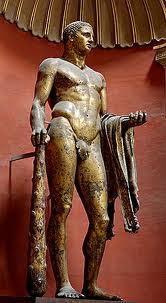
This is Hercules
Needless to say, he would have failed.
Dr Sreedharan, supposedly retired and who qualified for Indian Railway’s senior citizen quota, finished the job in 7 years.
Konkan Railway to me, is the second biggest achievement of Independent India, with the first being India remaining India. New standards will have to be invented, to realistically measure the impact of Konkan Railway on the Indian economy.
For starters
1. For the first time ever, three largest ports on the Indian coast, Mumbai, Karwar and Mangalore have a direct connection.
2. Travel time from the southern states to the north, have been reduced by upto 40 percent. The crummy old Nethravathi Express, used to take 38 hours to travel from Trivandrum to Mumbai.
Now, thanks to Dr E Sreedharan and the
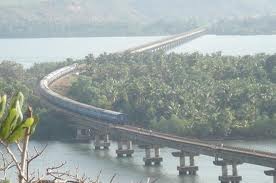
KONKAN RAILWAY
the same train takes 22 Hours. A 16 hour reduction in travel time. And a 16-18 hour reduction in travel times of all trains going from Kerala,Karnataka, Goa to the North.
All the trains.
Try measuring the impact. Don’t bother, you can’t.
And new levels of difficulty need to be established to measure the difficulty of this task. The sheer number of architectural impossibilities overcome by Dr E Sreedharan and his team in making this wild dream a reality, is mind boggling. All I can do is suggest you to go
here,
here and here.
However, there is one thing that encapsulates what all the above links have to say
THIS IS THE VIADUCT OVER THE PANVEL NADI
Which basically is a Marsh
Between two Hills
And to traverse it,
The train has to travel at a height, which is as tall as
In other words,
Dr Sreedharan and his team, built a goddamn Qutub Minar, over a marsh, between two hills, just so that, a train could chug over it.
Need I say more?
You will see this wonder of Modern India immediately after Ratnagiri on the Konkan Railway. In the 15 kilometer stretch between Ratnagiri and Nivasar, there are 3 tunnels and 5 viaducts. The third viaduct is the Panval Nadi viaduct, immediately after the first tunnel. The exact sequence will be —-> Big Tunnel, Massive Gorge, Big tunnel again.
Dr Sreedharan though, never had the chance to taste his success. In December 1997, one year before the Konkan Railway was thrown open to traffic, he was shunted to New Delhi to head a new organization. It was created to find a viable solution to the traffic woes of the aam aadmi in the national capital.
This organization was called the Delhi Metro Railway Corporation.
Of all the railway systems in the world, building a metro is the most difficult in the world. Most difficult, becomes impossible, when you have to build that damn thing under and over a megapolis.
Impossible reaches ‘You must be kidding me’ levels, when that megapolis in question is Delhi and the country in question is India.

There are more people in this pic than there are in Canada.
Delhi Metro was not India’s first metro. Calcutta has that honor. But Calcutta’s ‘I built my own metro’ story, was one sorry tale
Sample this
1. It took 22 years to build the Calcutta Metro, A metro whose total length was 16.75 kms. In other words, Calcutta Metro construction dudes managed a grand average of, .76 kms a year.
2. The Calcutta metro suffered from debilitating shortages in almost everything. Shortages of funds, shortages in labour and shortages in everything else. The only they had in plenty was those damn shortages.
3. And it was harried by the parent, the Indian Railways, every step of the way.
If the Calcutta metro was any indicator, the 168 Kms long Delhi Metro would have been beset with shortages, harassed by the Railways and would have been completed in A.D 2083.
If ever there was a movie made about Dr Sreedharan’s job, it would have looked something like this
But this was Dr E Sreedharan.
When he started off, he put in place some things that were never before done in the history of Indian mega construction projects
Like
1. His appointed himself as the judge, jury and the executioner as far as the Delhi Metro was concerned. No external influences were tolerated. And he took no prisoners. There have been stories were, people walked in with the traditional M.P recommendation letter, walked out of his office, with the paper in two different hands.
2. After giving himself the power, he changed the tendering process, upside down. In a country, where opening a single tender on an average, took six to nine months, Dr Sreedharan got the job done in 19 days. YES, 19 Days.
3. When confronted with the standard Government ‘I am short of money’ rigamarole, Dr Sreedharan did what any sensible government servant would do. He simply cut out the Government from the funding.
He single-handedly went and got a loan of USD 5 Billion sanctioned from the Japanese Bank of International Co-operation to fund the Metro. Now, 60 percent of the necessary finance secured, Government shut up and stumped up the remaining cash.
4. He then hired top International consultants from an assortment of countries, to cover for the lack of local talent, to supervise and execute the project.
For the first time in the History of India, the entire Delhi Bureaucratic circle was completely circumvented. That too, by one 74 year old dude from Kerala.
As a result
Phase one of the 5 billion dollar metro, was completed three years before schedule, entirely within the initially stipulated budget. And there was not even a single shard of corruption.
In India, that is the closest we can get to walking on water.
If someone had in 1998, said that such a thing would happen in India, He would have been given a priority ticket to Agra/Alibaug/Kilpauk or the nearest mental asylum.
Today, the Delhi Metro is complete and for the first time, Dilliwalas are enjoying the benefits of a full fledged suburban rail system that has a punctuality factor of 99.999 percent. All thanks to this man
Next time, any Dilli boy/girl tries to mock you or anyone with the moniker Madrasi, just mention the words, Metro-Sreedharan-Madrasi in the same sentence. The other side will shut up.
The successful execution of the Delhi Metro, made Dr Sreedharan the Tom Cruise of the Metro Rail universe. Every Indian city worth its salt, now wanted its own metro and Dr Sreedharan as its consultant.
One such city was Hyderabad. And the company executing that metro was a company called, MAYTAS INFRASTRUCTURE.
You know where this is going.
In September 2008, Dr Sreedharan, after observing as a consultant, sent the following report to the Planning Commission, Government of India
Making available 296 acres of prime land to the BOT [build, operate and transfer] developer for commercial exploitation was like selling the family silver. I fear a big political scandal some time later, as it is apparent the BOT operator has a hidden agenda which appears to be to extend the metro network to a large tract of his private land holdings so as to reap a windfall profit of four to five times the land price.
Planning commission, that plans little and develops less, as usual did not pay heed to this report. In fact they chastised Dr Sreedharan, for not backing up his allegation with necessary proof.
This is what happened, three months later
Remember how the
scandal started? It started by Satyam Computers, arbitrarily taking over Maytas infrastructure, a company that was neither in IT, nor was a competitor. In fact the only link between Satyam and Matras was that it owned by Ramalinga Raju’s sons.
And sensing that Maytas was in big trouble, he ‘bought’ the company to save it.
And Dr Sreedharan, predicted that the company was in trouble, three months before the world knew it.
So let me just encapsulate, if that can be done, on what Dr Sreedharan has done for the country
1. He restored India’s longest sea bridge which was completely destroyed, in 46 days.
2. He designed India’s first Metro.
3. Supervised the building of India’s first indigenous Merchant vessel.
4. Executed India’s most difficult project since Independence.
5. Gave Delhi wallahs, something called the Metro.
6. Predicted India’s biggest corporate fraud, three months before it happened.
I don’t know how the Bharat Ratna nomination thing works. But I believe you stand a chance if you have done something good for the country. Now tell me, what has Dr Sreedharan not done for the country?
I mean when you can consider a guy who sells a computer anti-virus on prime-time television for India’s highest civilian award, Why is there not a whisper about a guy who has ensured 400,000 people on the western coast of India saw a train for the first time?
Come to think of it though, I really don’t want Dr Sreedharan to get the Bharat Ratna. I mean, he will then join a club that is populated by people like Bismillah Khan, Lata Mangeshkar, Bhimsen Joshi etc. No disrespect to them, but they were at best, paid performers who had negligible impact on the population of India. (Lata Mangeshkar in fact has had a negative impact. A flyover which will bring respite to thousands, if not lakhs, of Mumbaikars is not being constructed solely due to her ‘privacy’ concerns)
Dr Sreedharan should not be given the Bharat Ratna. Because the Bharat Ratna does not deserve a man like Dr Sreedharan

